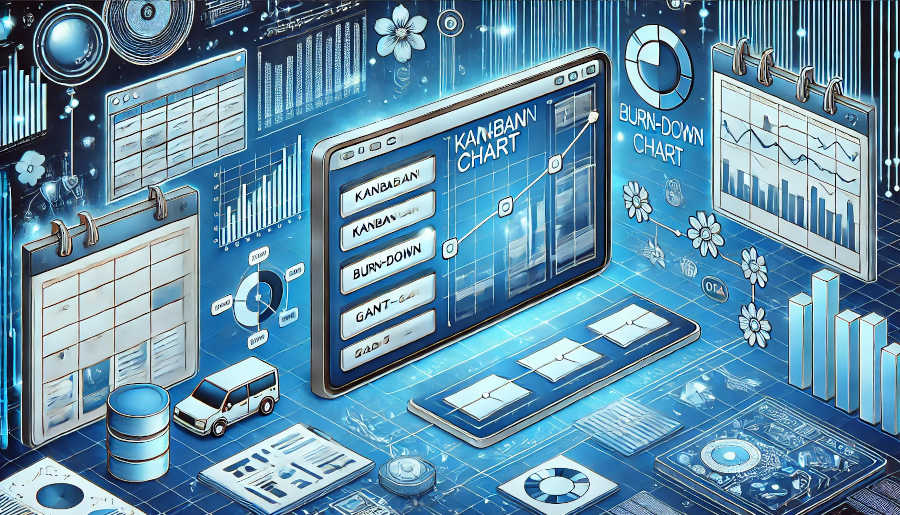Understanding the Product Backlog
The product backlog is a living document that captures all the work that needs to be done to deliver a product. It is a prioritized list of user stories, features, bugs, and other items that represent the desired functionality and improvements of the product. The product backlog is owned by the product owner, who is responsible for maintaining and prioritizing it. The product owner works closely with stakeholders, including customers, users, and the development team, to understand their needs and translate them into actionable items in the product backlog.
The product backlog should be visible, transparent, and accessible to all stakeholders. It should be regularly updated and refined to reflect changes in requirements, priorities, and market conditions. The product backlog should also be sized and estimated to provide a clear understanding of the effort required to complete each item. This helps the development team plan and schedule their work, and the product owner make informed decisions about what to include in each sprint or release.
One of the key benefits of the product backlog is its ability to provide a shared understanding of the product vision and goals. By having a single source of truth for all the work that needs to be done, the product owner, development team, and stakeholders can align their efforts and focus on delivering the most valuable features and improvements. The product backlog also serves as a communication tool, enabling stakeholders to provide feedback and input on the product roadmap and priorities.
Prioritization Techniques
Prioritizing the product backlog is one of the most challenging and important tasks for the product owner. The goal of prioritization is to ensure that the most valuable work is done first, while also considering the dependencies, risks, and constraints of the project. There are several techniques that can be used to prioritize the product backlog, including:
-
MoSCoW Method: This technique involves categorizing each item in the product backlog as Must Have, Should Have, Could Have, or Won't Have. Must Have items are essential for the product to be considered complete, while Should Have items are important but not critical. Could Have items are nice-to-have features that can be added if time and resources permit, and Won't Have items are not currently planned for the product.
-
Kano Model: This technique helps to identify the different types of customer needs and how they impact customer satisfaction. The Kano Model categorizes customer needs as Basic Needs, Performance Needs, and Delighter Needs. Basic Needs are the minimum requirements for the product, and if not met, will result in customer dissatisfaction. Performance Needs are features that customers expect and will increase customer satisfaction if they are provided. Delighter Needs are unexpected features that will exceed customer expectations and result in high levels of customer satisfaction.
-
Value vs. Effort Matrix: This technique involves plotting each item in the product backlog on a matrix based on its value and effort. Items that have a high value and low effort are prioritized first, as they provide the most bang for the buck. Items that have a high value and high effort may be prioritized later, depending on the available resources and time constraints. Items that have a low value and low effort may be deprioritized or removed from the product backlog.
When prioritizing the product backlog, it is important to involve the development team and other stakeholders. The development team can provide valuable insights into the effort and complexity of each item, while the stakeholders can provide feedback on the value and importance of each item. By involving all parties in the prioritization process, the product owner can ensure that the product backlog reflects the needs and priorities of the entire team.
Backlog Refinement
Backlog refinement is the process of continuously reviewing, updating, and prioritizing the product backlog. It is an ongoing activity that should be done regularly, typically during sprint planning or as part of the agile ceremonies. The goal of backlog refinement is to ensure that the product backlog is up-to-date, accurate, and ready for the development team to work on.
During backlog refinement, the product owner and the development team review the items in the product backlog and discuss their details, dependencies, and estimates. The product owner may add new items, remove items that are no longer relevant, or update the priorities of existing items. The development team may provide feedback on the feasibility and effort required to complete each item, and suggest changes or improvements to the product backlog.

Backlog refinement also involves breaking down large items into smaller, more manageable user stories or tasks. This helps the development team understand the work required to complete each item and estimate the effort more accurately. The product owner should ensure that each user story or task is well-defined, has clear acceptance criteria, and is small enough to be completed within a single sprint.
In addition to reviewing and updating the product backlog, backlog refinement also provides an opportunity for the product owner and the development team to communicate and collaborate. By working together to refine the product backlog, the team can build a shared understanding of the product vision, goals, and requirements. This helps to improve the quality of the product and the efficiency of the development process.
Collaboration and Communication
Effective collaboration and communication are essential for successful product backlog management. The product owner, development team, and stakeholders need to work together to ensure that the product backlog reflects the needs and priorities of the entire team. This requires open and honest communication, regular feedback, and a willingness to listen and understand each other's perspectives.
The product owner should communicate the product vision, goals, and priorities to the development team and stakeholders on a regular basis. This helps to ensure that everyone is aligned and working towards the same objectives. The product owner should also provide clear and detailed requirements for each item in the product backlog, and be available to answer questions and provide clarification as needed.
The development team should communicate with the product owner and stakeholders throughout the development process. They should provide feedback on the feasibility and effort required to complete each item, and suggest changes or improvements to the product backlog. The development team should also be proactive in identifying any issues or risks that may impact the delivery of the product, and work with the product owner to develop a plan to address them.
Stakeholders should also be involved in the product backlog management process. They should provide feedback on the product vision, goals, and requirements, and help to prioritize the items in the product backlog. Stakeholders should also be kept informed of the progress of the project and any changes to the product backlog.
In addition to regular communication, collaboration tools and techniques can also be used to improve the efficiency and effectiveness of product backlog management. Agile project management tools, such as Jira, Trello, or Asana, can be used to manage the product backlog, track progress, and communicate with the team. These tools provide a centralized platform for the product owner, development team, and stakeholders to collaborate and share information.
Conclusion
Product backlog management is a critical skill for agile product owners and development teams. By understanding the product backlog, prioritizing effectively, refining the backlog regularly, and collaborating and communicating effectively, teams can deliver high-quality products that meet the needs and expectations of their customers. Effective product backlog management also helps to improve the efficiency and effectiveness of the development process, reduce risks and uncertainties, and increase the chances of project success.
In today's fast-paced and competitive business environment, agile development has become the norm for many organizations. As such, the ability to manage the product backlog effectively is essential for teams to stay competitive and deliver value to their customers. By investing in the skills and practices outlined in this article, product owners and development teams can improve their product backlog management capabilities and achieve greater success in their agile projects.
In conclusion, product backlog management is not a one-time activity but an ongoing process that requires continuous attention and improvement. By following the best practices and techniques outlined in this article, teams can ensure that their product backlog is well-managed, prioritized, and refined, and that they are delivering the most valuable work first. With effective product backlog management, teams can increase their productivity, improve the quality of their products, and ultimately achieve greater success in their agile development efforts.
ARTICLE TITLE :Product backlog management skills in agile development ,AUTHOR :ITpmlib

















